Episode Twelve
Telling Stories: Creating Narratives in Hotel Design with Nicholas Hickson
Telling Stories: Creating Narratives in Hotel Design with Nicholas Hickson
In this Digital Discussion, SBID CEO & Founder, Dr Vanessa Brady OBE is joined by Nicholas Hickson, Founder and Creative & Technical Director of THDP Design.
With over 34 years of experience in interior design, Nicholas has worked on high-end interior residential and commercial projects both internationally and within the UK. Nicholas has extensive experience with hotel interior architecture, schematic planning, FF&E selection, as well as custom design and procurement strategies, with a unique contemporary approach.
An award-winning design practice, THDP specialises in creating concepts that evolve into compelling hotel spaces. At the core of its creative approach, THDP works to uncover and represent the underlying story behind each project.
In this discussion, Nicholas discusses the breadth of projects he has worked on across Europe, and how THDP came to exist.
Authenticity is at the core of THDP's design approach, whether it be the culture, location or history of the space. Nicholas describes what the creative process looks like for the design practice and how he is able to transform and revitalise commercial spaces by intentionally incorporating the context in which they exist. He explains how narrative building is an essential part of the design process involving collaboration and research that is bespoke for each project.
Tune in to the whole conversation to discover more.
Showcase your products to this year's esteemed SBID Awards' judging panel for Product Design categories, comprising some of the world's most innovative and inspiring interior design practices to review the latest developments in product design. The judges include Head of Interior Architecture at Zaha Hadid Architects; Head of Interior Design at Harrods Interior Design; Director of Interior Design at IHG, CEO & Founder of Katharine Pooley Ltd, and Studio Director of Wimberly Interiors (to name a few!).

A hugely experienced interior designer within the high-end hospitality sector, Tony leads a team within SHH’s hospitality arm. He is a creative interior design professional with 20 years’ experience in leading prestigious high-end hospitality, restaurant and residential schemes globally. A client-facing creative and technical designer with an extensive knowledge of the Interior Design process.
"I very much look forward to being part of the 2021 judging panel of the SBID awards. SBID provides a great platform for recognition to businesses who wish to showcase their work to a talented global audience by bringing together high standards of work from across the world." - Antony Duesbury

Carolina has more than a decade of experience on the design and implementation of high-end interior design and architecture projects in London and around the globe. Trained as an architect, she established her own architectural business in her native country Brazil before moving to London 15 years ago. Her passion for design excellence and extensive knowledge in the luxury global market, makes it possible for her to transform any client’s aspirations into a truly bespoke luxurious space. Her architectural background gives her a combination of creative design skills with a wide range of technical knowledge. She is the Creative Director at the award-winning luxury design studio Casa Forma’s and is responsible for delivering leading-edge residential schemes for international high net worth individuals and property developers.

David Chang, founder of David Chang Design Associates International (DCDA) and registered Professional member of NCIDQ, ASID, SBID and IIDA, has over 25 years of experience in hospitality and high end residential interior design and management experiences in North America and Asia. In 1998, David founded DCDA in Vancouver, Canada, and expanded to China market in 2006, established firms in Guangzhou, Beijing and Taipei, to provide exclusive upscale design services on landmark projects for local top developers. David's innovative works have won numerous design awards in the UK, Italy, Canada and China.

Dr Ning is the President of Wanda Hotels & Resorts. During his tenure at Wanda, he has led the design, construction and operation management of over 100 upscale and luxury hotels. Under his leadership, these hotels have won many prestigious international design awards, including the SBID Awards, Gold Key Awards, IIDA-Best of Asia Pacific Design Awards, Hospitality Design Awards and many more.

Dr Garaj is Head of Brunel Design, where he also teaches on the Professional Design Studio module, a part of the MSc Integrated Product Design programme. He has co-ordinated a number of live project briefs across design fields, with organisations including Cancer Research UK, NHS, Pan Macmillan, Help for Heroes, Friends of the Elderly, Corney & Barrow, Shell, Ibis and BT. Dr Garaj’s research is aimed at design, development and evaluation of innovative systems, products and services, with the focus on digital and digital-physical domains and the application of the latest technologies.

Gary is an architect with a passion for sustainable architecture and has over 30 years continually sought to bridge academic research, teaching and practice to create a sustainable future. In his role as Principal Lead for Science and Technology at HOK, his aim is to deliver a sustainable future not only in the science and technology but across all sectors of the construction industry. Gary has collaborated and led sustainability with a number of leading practices including Wilkinson Eyre, Bennett’s Associates and Hopkins Architects. These collaborations have delivered award winning sustainable buildings across a range of sectors from Higher Education, Academic Research, Residential mixed use, Office and Cultural Buildings.

Henry is Director of Design at InterContinental Hotels Group. He is responsible for creating the interior design and guest experience for IHG’s Kimpton and Hotel Indigo brands across Europe. Since joining IHG in January 2015, Henry has worked across some of IHG’s most celebrated and award-winning design projects and has led the teams responsible for the design of all new Hotel Indigo properties over the last 5 years, as well as working on more than 20 refurbishment projects across IHG’s existing hotels.

Herbert has extensive experience of working on complex mixed-use developments on challenging sites. Along with a strong awareness of stakeholder aspirations, he has a proven ability to convert constraints into opportunities. Herbert is a graduate of Westminster University and the Architectural Association in London, and the National University of Singapore. He joined DMA in 1999 as a Project Architect and was appointed a Partner in 2008.
"What a year it’s been since the last SBID Awards. A year where we have all had to learn new ways of working, living and socialising. This creates new needs and requirements for designers to contemplate. I am eager to see this year’s new products and how they may address some of our recent lifestyle changes, products that will bring us joy and lift our spirits!" - Herbert Lui

Kar first worked with Zaha Hadid Architects in 1985 following his studies with Zaha Hadid at the Architectural Association. After completing his studies in the UK and USA, Kar worked on projects around the world for Kohn Pederson Fox and Louis Vuitton Malletier, with a focus on interior architecture, commercial developments and retail design before re-joining ZHA as Head of Interior Architecture in 2014. His residential interiors, in particular, have won numerous awards and have been widely published.

Katharine is one of the most sought-after interior designers working internationally today. Recently named ‘British Interior Designer of the Decade’, ‘International Designer in Asia of the Year’, and ‘Entrepreneur of the Year’, her design ethos is both highly respected and uniquely far reaching. Her eponymous Knightsbridge Design Studio was established over 15 years ago and continues to create unmatched luxury interior designs for landmark commercial and residential projects in London and Worldwide for the most discerning clients. Overseeing her team of 47 interior designers and architects, Katharine immerses herself in every detail of her client’s complex project.

With over 17 years’ experience in the luxury interiors industry Letitia heads-up Harrods Interior Design, a multi-disciplinary bespoke design service by Harrods. In her previous role within the Harrods Home buying team, Letitia worked on redeveloping the home and furniture offering to provide carefully curated products that hero provenance, craftsmanship and heritage in helping to shape Harrods Home into the exciting design hub it is today. Letitia and her team of design experts travel the world in search of beautiful designs, the latest trends and the highest quality fabrics and products. Letitia’s design ethos centres around two key factors: relevance to the client and their lifestyle, and harmony of the design with its surrounding environment.

As Studio Director of Wimberly Interiors London, Rachel brings more than twenty years of hospitality expertise and leadership to the team. Known for her pragmatic design approach, she has been at the helm of some of the world’s most celebrated projects. Rachel’s acute eye for detail has been cultivated from extensive experience in the design industry. Having worked previously as a contract manager and with more than a decade’s experience in design management, she possesses the vision and foresight to create successful, innovative and authentic projects of enduring value for clients, supported by a unique and in-depth understanding of technical nuances and processes.
"An unparalleled opportunity to celebrate and support design talent, innovation and excellence, I am delighted to be representing Wimberly Interiors as a judge at this year’s SBID Awards. Alongside esteemed industry peers, I am looking forward to seeing where the past year in design has taken us – not just in the UK, but globally." - Rachel Johnson

Sharon is Founding Partner of Oliver Burns, a multi-award-winning architectural interior design studio that thoughtfully designs the world’s finest homes. Working across an exclusive portfolio of international turnkey projects, the team has a world-class reputation for bespoke commissions, super-prime developments and elegant spaces that are synonymous with a luxury lifestyle. The concept of ‘Thoughtful Luxury’ underpins their approach. It is reflected in their designs, from the concepts they develop, through to the thoughtfully layered details they create with artisans and craftsmen. This approach ensures that all of their projects are thoughtfully designed, thoughtfully built and thoughtfully finished.

Stella is the Co-Founder of AGC, London’s fastest-growing portfolio of international award-winning Interior Design companies. Creating the benchmark in luxury living, the Accouter Group of Companies which is home to Accouter Design, A. LONDON and BoxNine7, delivers world-class interior architectural and furnishing services to the global property market and private clients. With 15 years of experience mentoring and directing diverse teams within the field, Stella has spent 7 years building AGC which has been voted one of the best places to work in property on multiple occasions. Taking a lead creative role for the Group, Stella is responsible for all aspects of brand and design.
"The SBID Awards is an opportunity for the industry’s creative community to stage their courageous minds. I look forward to exploring beautiful, useful and respectful ideas which are so seemingly simple yet intricate as a process. I am proud to represent the iconic SBID as a judge and play a part in honouring great designers with these prestigious accolades." - Stella Gittins

Terry joined Richmond International in 2002 with a background in leisure and retail consultancy. He has travelled the world and was based in the Far East and Middle East during the early years of his career. Now a Director of Richmond International, Terry is responsible for the company management, liaising with clients and has a very hands-on role throughout the design process. Terry has steered a range of Richmond International’s most notable projects with multinational brands and independent owners that have been honoured with awards and accolades across the hospitality design space, including Richmond International’s successful cruise ship design projects.
"The SBID is a respected name within the Interior Design Industry that supports designers and artists. It is an honour to be invited to be part of their distinguished judging panel. This is a unique opportunity to review and assess other talented designers in associated areas of Interior Design, and to have a personal involvement in celebrating and rewarding their creativity and vision to achieve design excellence. I am also looking forward to being enlightened with new ideas new solutions." - Terry McGillicuddy

Tim is the founder and leader of Blacksheep, with 25+ years hospitality design experience, launching the studio in 2002. With a background in hospitality and interior design lead him to establish a design agency specialising in hospitality, food and beverage with the aim of bringing a new perspective to the industry. The agency was founded on the belief that a designers responsibility went beyond just interior design; that tailored experiences positively change hospitality businesses, brands and people from within.

Trevor became the Managing Director of Areen Design in 1989. The group now employs over 350 people across 6 offices, worldwide. As a director of each Areen Group company, Trevor drives the strategic growth of the Group by fostering the skills and specialisms of each company. At Areen Design, he leads over 120 interior designers, architects and procurement specialists in delivering fast-paced, large scale projects in some of the world’s most challenging regions. From luxury private residential complexes, to international airports and city hotels, Areen Design ensure that every project is carefully considered from initial concept through to turn-key delivery.
Entries for the SBID International Design Awards 2021 are open!
View the Interior Design & Fit Out judges or click here to view the full SBID Awards judging panel.
To find out more about entering, visit www.sbidawards.com
Specialising in residential interiors, Diego Correa, SBID Accredited Designer & Founder of Diego Correa Interior Design, shares his approach to successfully integrating art within interior design schemes to capture the client's narrative and enhance interior environments.
One of the most important things I have learned regarding understanding art is a comment made by an art curator friend, who said: “Diego in art there is such thing as multiplying by Zero”.
He explained, "When artworks are being displayed in a room, if you place them incorrectly, for example, a very strong piece next to a subtle one, or two very bold pieces too close to each other, it will be very difficult if not impossible to appreciate them. The tension will be too strong between both pieces, hence each of them will annul the other: Multiplied by Zero."
Since then, when working with artworks either in a gallery, residence or in a public space this awareness has helped me to be attentive to what the artwork tries to say and how the setting can help to allow that communication between “it” and the viewer to be possible and even enhanced.
And that “setting” in a home is its interior design.
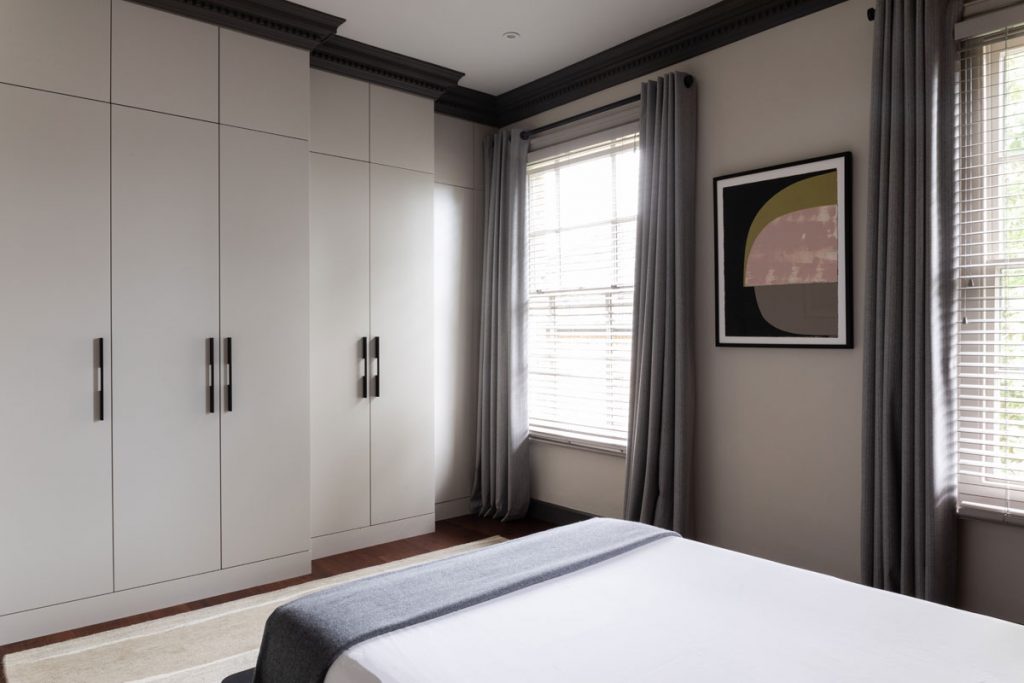
The first step to making it right when placing artwork in a home is to understand the relation of the owner with art: Is it decorative? Is it an intellectual/passionate relation with its meaning and expression? Is it pride for having many pieces he/she have accumulated? or Is it the display of a well-shaped collection?
All reasons are valid but every one of them will demand a different approach to positioning. Other important aspects include: dimensions, theme, technique, fragility and very importantly the story you want to tell; not just about your artwork, but about yourself too.
Due to the fact that interior design is going to generate a visual, intellectual and emotional response in the occupants and visitors alike, it will become the frame in which the artwork will sit, hopefully comfortably, and tell its very own story with freedom and easiness.
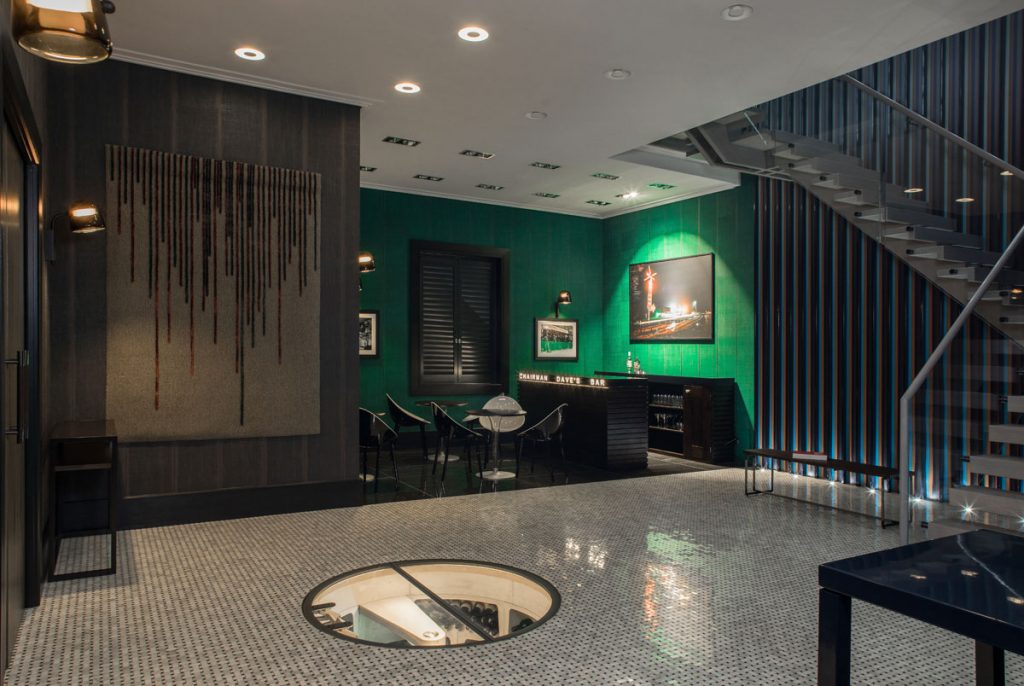
If you are lucky enough to have one of Monet’s waterlilies or a Rothko (let’s dream) you want to be able to immerse yourself in the expansion that these artworks offer, one of beauty and nature, the other of eternity so the position chosen for them has to be one that allows contemplation, that removes distractions, with the right lighting and a space from which you can imagine, think and feel.
Art helps us to appreciate the tangible and intangible from different perspectives allowing ourselves to expand our horizons while we enjoy it visually; Interior design has the duty to understand this, incorporating them wisely, thoroughly and sensitively in the design scheme and flow of the space. We cannot forget that Interior design can be either the frame that enhances communication or the zero-multiplying factor; for an art lover, the latter should not happen.
About the Author
Founder of Diego Correa Interior Design, Diego specialises in residential projects. With 14 years in the interior design industry and a degree in architecture, his approach stems from a combination of his professional training and experience together with his ethics and vision.
Want to submit your own content? Click here to find out more.
Today the SBID Awards has firmly established itself as one of the most prestigious interior design Awards in the global design calendar. It represents outstanding achievements, top quality design services and fascinating creativity in producing cutting-edge event experiences.
By representing all aspects of the interior design industry across Interior Design, Product and Fit Out on its inclusive and international stage, the SBID Awards offers excellent exposure for your work and designs, provides unique networking opportunities, and drives professional standards across the industry!
Haven’t completed your submission, or are still considering if you should enter the SBID Awards this year? Here are the top 5 reasons you should!
Success in the SBID Awards programme represents a significant achievement within the field of interior design, recognised as sign of design excellence among peers, clients and the press. The programme provides a global platform for showcasing your design talents to international audiences across the design profession. Featuring your company, projects or products on the SBID Awards website and social media as a Finalist (or better yet, a Winner!) offers valuable exposure to increase your brand awareness, promote your work and amplify your online presence!
The SBID Awards introduces an exciting new panel of expert judges to join its’ impressive and international jury, so each year presents a unique opportunity to showcase your work and innovative designs directly to top-tier industry professionals on the judging panel! Discover more about the diverse panel of judges who are set to evaluate the Interior Design & Fit Out categories here, and explore the esteemed judges for Product Design categories, here.
The three-tier judging process ensures that only the best proceed to the next level - with each entry considered fairly and independently for technical content and creative merit, regardless of the budget! The public vote also sees 225,000 unique voters – so it's a great way to publicise your best work!
Winning only has value if you have truly earned it! The SBID Awards has been praised for its ethics and transparency, achieving a GOLD Standard Awards Trust Mark by the Independent Awards Standards Council. All entry information is listed on the website so it’s clear from the start what is involved - and there are no hidden fees in order to progress so entrants can't simply buy their way to the top! This means you can enter with the confidence that only the most talented designs, impressive projects and innovative products will go all the way (not the entrants with the deepest pockets!).
The SBID Awards is open to any design professional from interior designers, architects, property developers and decorators, to contractors, fit-out specialists, manufacturers, suppliers and product designers. Companies of any size are eligible to enter. Whether an interior design veteran or a recent graduate, all entrants have a fair and equal chance of winning! As a global competition there are no geographical limitations, entrants and projects can be based anywhere in the world, welcoming entries from all backgrounds and budgets by keeping entry costs low!
In the 12 years since the SBID Awards first launched, it has received 3000+ incredible entries by 1000+ companies from 85+ countries across the globe - and still growing! Entering the Awards provides the opportunity to become part of the international design community and connect with new audiences on a global scale at our annual Awards ceremony and supporting networking events.
Just being shortlisted as a Finalist for an SBID Award can bring your business substantial benefits, worldwide industry recognition and extensive PR opportunities.
Click here to discover how entering awards can enhance your business!
The SBID Awards programme is designed to recognise, reward and celebrate the profession of interior design from the interior designer’s projects and the products they specify, to the specialist contractors that install the final fit out.
If you’re a designer, product manufacturer or contractor, click here to find out more.
Standard Rate Entries close on Monday 31 May 2021!
SBID Accredited members also receive exclusive entry discounts.
Personal Line is the design-led home fitness equipment by SBID Accredited Supplier, Technogym. A premium collection that combines the style of the world-acclaimed designer Antonio Citterio, with Technogym’s experience in the world of fitness and sport as the Official Supplier of the last 8 Olympic Games.
Alongside state of the art biomechanics and digital technologies, Personal Line products are made using refined materials and top-level craftsmanship, conceived to be specified as beautiful furniture pieces in the most inspiring spaces of people's homes. The line includes the most iconic fitness equipment – Treadmill, Bike, Recline, Elliptical, Kinesis and Power Station – in order to offer people both the option of creating an entire home gym or to integrate their favourite equipment within their living room, bedroom or bathroom.

Personal Line products are now equipped with the newly launched Technogym Live console that allows users to choose personalised training experiences from extensive on-demand training contents including trainer-led session, athletic training routines, outdoor virtual training and endless entertainment options.
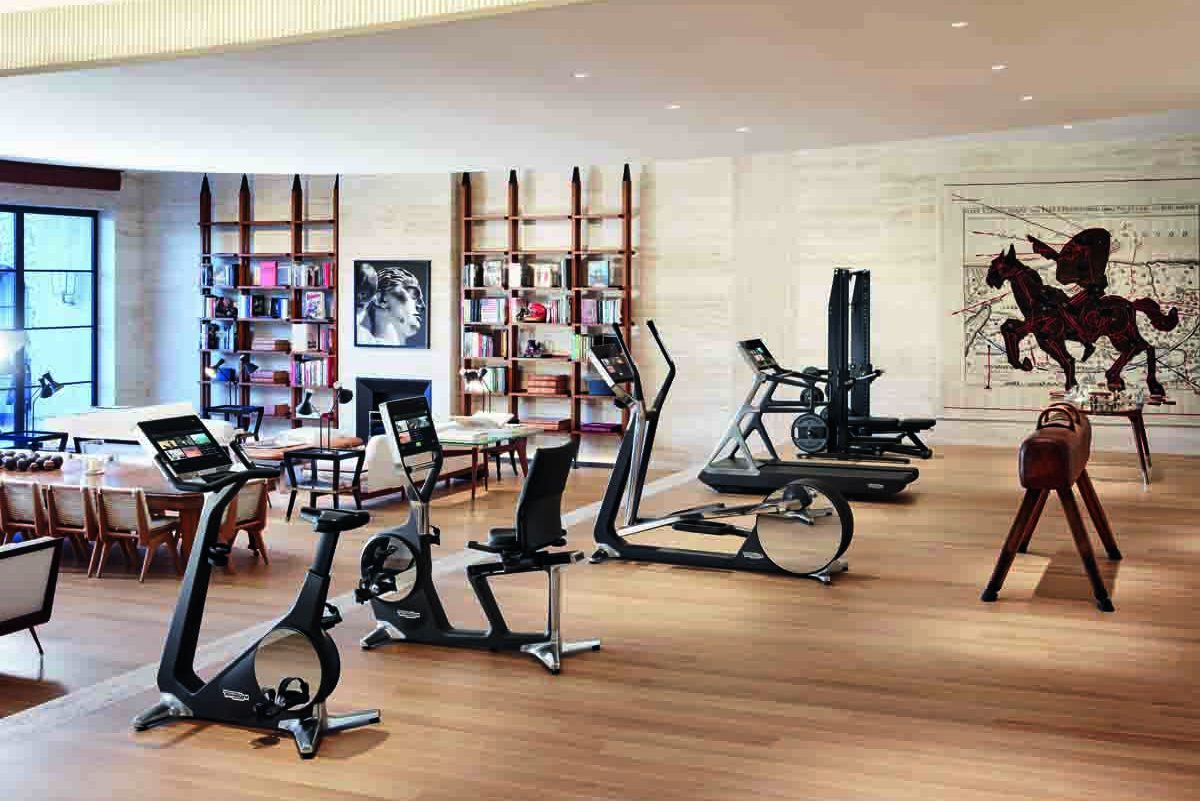
These innovative fitness features alongside the design-led nature of the collection makes it the perfect addition to enhance home gyms for aesthetic appeal and intuitive functionality.

Bike Personal is the latest product from Technogym’s Personal Line, it’s at the same time a professional bike, equipped with the most innovative training programs and a design object that can fit perfectly within any interior style. The materials chosen are elegant and refined, such as micro-polished steel and aluminium worked at the highest level of craftsmanship.
Cross Personal is the ideal piece of training equipment, suitable for everyone from beginners to professional athletes. The elliptical movement is smooth and well-suited for burning calories thanks to the combined movement of upper and lower limbs.
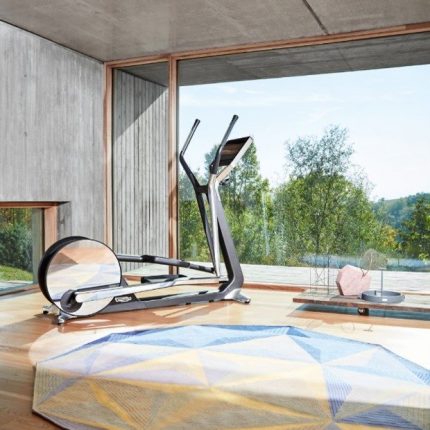

Run Personal is a revolutionary treadmill blending state-of-the-art technology with functional design. Highly innovative, it reveals close attention to the use of elegant and prestigious materials. Both performance and functional features are the result of over 30 years of experience that Technogym has acquired by helping 50 million people train across the world, each and every day.
Recline Personal represents the perfect combination of premium design and functionality. Ergonomically, the seat on Recline Personal is highly innovative with both seat and backrest. A blend of ergonomics and design makes Recline Personal the ideal solution for both the home environment and the office.
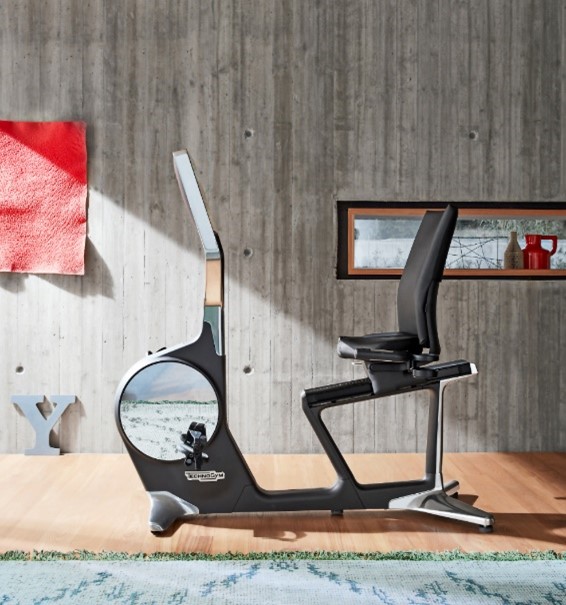
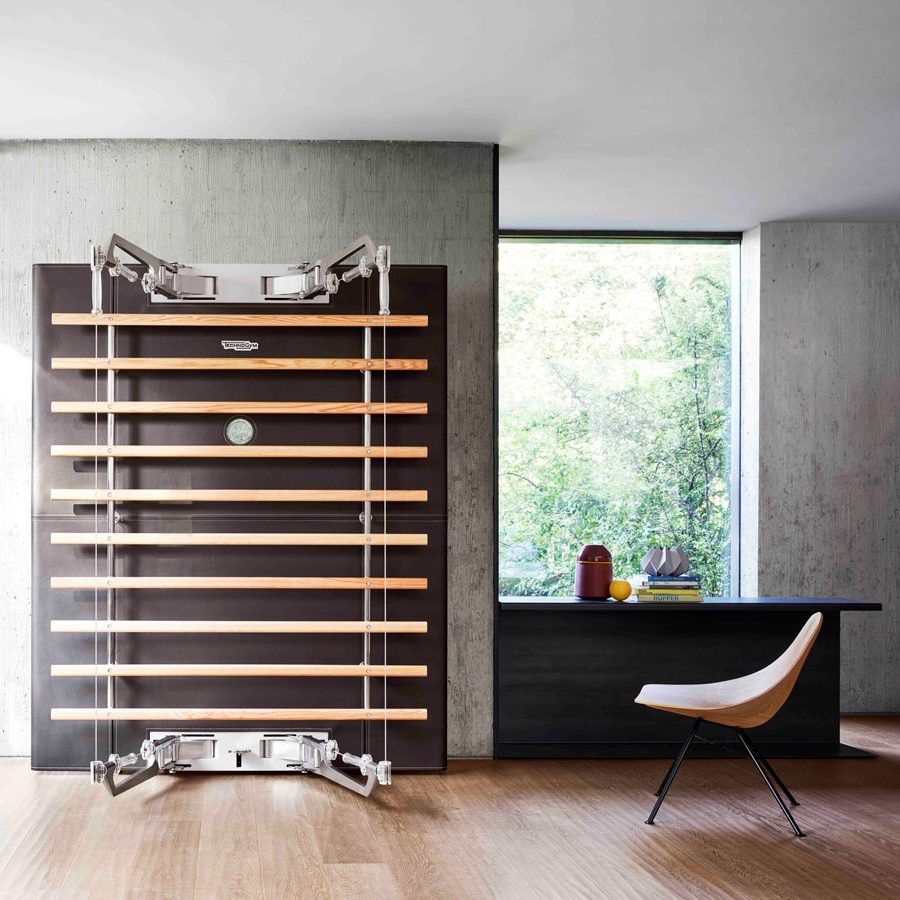
Technogym® Kinesis Personal is the start of “gentle gymnastics” taking fitness and wellness at home into a new era. As a design object or simply a work of art, Kinesis Personal is an eloquent expression and original piece of design. Perfectly suited to the home environment as well as office spaces, hotels or spas, Kinesis Personal offers 200 exercise possibilities in less than one square metre.
In the wake of the current hi-performance workout and professional training trends, the Power Personal consists of two chic elements: Bench Personal and Rack Personal. Bench Personal is the adjustable professional bench designed to carry out strengthening and toning exercises, characterised by a sophisticated design and top class materials. Rack Personal is the free weight training machine that combines sturdiness, efficiency and a compact design allowing barbells and plates to be supported safely and in style.
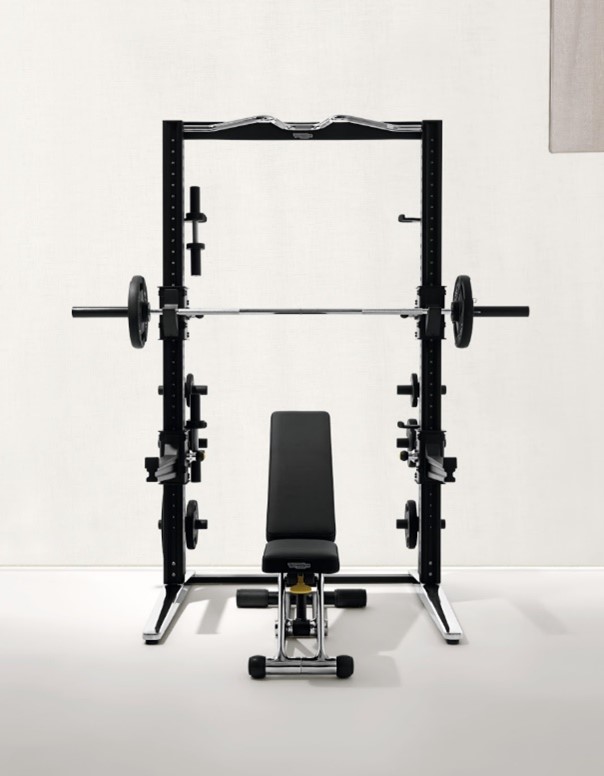
If you'd like to become SBID Accredited, click here to find out more.
The SBID International Design Awards introduces an exciting new panel of expert judges to join its' impressive and international jury for 2021. Meet and discover more about the diverse panel of judges who are set to evaluate the Interior Design & Fit Out categories for this year's SBID Awards!

Alicja started her career in the built environment back in 2003 working for construction companies in Europe, USA and Caribbean assisting on delivery of commercial and residential build projects. She joined the DfE’s Property Services team in 2015 to manage property aspects of the Free Schools, delivering over 800 new schools across the country to date, providing diversity and improved quality of education for primary and secondary aged children.
"I am excited to join the judging panel because it is an opportunity to have a good look at the design projects delivered around the globe and celebrate achievements in this area. It will be a pleasure to be part of this amazing event and apply my affinity for a great design into a good use." - Alicja Baxter

Andrew Katz
Partner
Prospect Hotel Advisors LLC
Andrew is a partner at hospitality asset management firm, Prospect Hotel Advisors LLC. Prospect Advisors is responsible for The Blackstone Groups hotel portfolio globally, overseeing the exclusive consultant partners that support the portfolios as well as providing third party asset management services for other Real Estate firms. As part of this role, Andrew oversees Axios Hospitality Real Estate, the London-based provider of Asset Management Services to The Blackstone Group in Europe and the UK, where they own 60 hotels. Prior to this, Andrew was Senior Vice President of Asset Management for Starwood Hotels and Resorts Worldwide.

Ben is the Design Director for BuzzFeed News, where he leads the art desk and works across the newsroom to visualize, design, and present our journalism to a broad audience. In his time at BuzzFeed News, Ben worked on the launch of BuzzFeedNews.com, designed and art directed articles that have been won awards from the Society of Publication Designers, American Illustration, and the Society of Illustrators, as well as being selected as finalists for the Pulitzer prize.

As Executive Editorial Director of WGSN Bethan oversees the content produced by WGSN. Collaborating with a global team of senior strategists, analysts, and consultants, Bethan is the lynchpin working across content, marketing and product, ensuring that WGSN continues to lead the way as a world-class trend forecasting service. Bethan has over 20 years’ experience as a design, luxury and lifestyle journalist, contributing to numerous publications including Architonic, Hole & Corner and The Observer Design magazine, holding senior positions at Telegraph Luxury, Wallpaper* and ELLE Decoration. A design-lover, Bethan has also written several books on hospitality interiors and sporadically hosts a podcast interviewing female architects and designers.

Carlo Castelli is an architect and masterplanner. He studied architecture in Genoa, Italy where he completed a masters Degree in architecture and in 2011 he completed a Master in ‘City Design and Social Science’ at the London School of Economics and Social Science. Through 20 years’ experience on diverse urban contexts and complex buildings, Carlo has acquired a great understanding of how the various systems and processes shape the urban environment. He is accustomed to integrated, inter-disciplinary design development at various scales, managing interfaces, coordination and brief interpretation towards the creation of successful urban environments. As Head of Cities Solutions for UK and Europe, Carlo leads the team of urban thinkers, masterplanners and urban designers that deliver exemplary projects in the UK and internationally.

Carol Doering
Certified Healthcare Interior Designer
Carol is a senior interior designer, who has been involved in the design of healthcare environments for nearly 40 years when healthcare facilities were bland, uninspiring places to receive treatment, not places of wellness and engagement as they have become today. Project experience includes hospitals in small communities and large metropolitan areas, outpatient offices for single providers as well as multi-discipline ambulatory care centres with places for engagement and education as well as long term care communities where our seniors live in a variety of settings.

Christopher See is a Creative Director at Amazon. Wielding over 10 years of brand identity design experience, he is currently a global design lead for the Prime brand, running onsite experiences, campaigns and retail projects. He has created unique brand visions in 3 different continents, encompassing all touchpoints from print to digital, sonic logos to airline cabin interiors, car launches to the biggest billboards in the world. Prior to Amazon, Chris was the Design director at Hyundai, in charge of crafting and launching the Hyundai rebrand, and a senior designer at branding firm, Landor.

Damien is the Director of Major Programmes at the British Council. Amongst other projects, Damien has delivered the relocation of the British Council’s HQ to the Olympic Park in Stratford. He is currently in the process of delivering the relocation of the British Council Art Collection to the former IKEA building in the centre of Coventry. Prior to this, Damien worked at Tameside Council and during his career, has also undertaken roles with the Northwest Regional Development Agency and with the Cabinet Office where he worked in the PM’s Strategy Unit as well as the Home Office for Jim Reid and Charles Clarke.

Helen Brocklebank is CEO of Walpole, the trade body for the British luxury industry. Helen is a specialist in luxury media brands, building her career at Esquire and Harper’s Bazaar. During her ten year tenure, Helen founded the highly successful, multi-platform brand extension ‘Bazaar At Work’ for Omega and created enduring content partnerships with iconic brands including Bentley’s sponsorship of Bazaar Art and Esquire’s Man at the Top Awards for Glenmorangie. Most recently Helen established a content consultancy for luxury brands working predominantly with retail and media clients, including Liberty and Boat International. She brings to Walpole a deep understanding of, and passion for, the business of luxury, an unerring ability to conceive creative and impactful initiatives and an entrepreneurial spirit that drives their successful delivery.

An Engineer and a futurist, Jalaj Hora is also the Senior Vice President of Innovation, Engineering and Quality at Burberry. Leading a team of professionals to work on luxury products; Jalaj’s most significant achievement has been to enable the convergence of design and engineering for the brand. Jalaj drew on his background in consulting, manufacturing and retail to create an innovation team at Burberry to support the ambitions and to deliver newness for a fast growing and iconic luxury brand. He leads the technical design and product engineering department across all product categories. He also overseas the end to end quality organisation from materials and product to after sales. A champion of responsible manufacturing, he has directed the elimination of hazardous chemicals from Burberry’s supply chain and driving some industry leading work in reducing the water and energy footprint in manufacturing. Prior to joining Burberry, Jalaj was the Senior Group Director of Product Development and Design at Target Corp.

Jenny Kwon is the Manager of Global Store Design at Tiffany & Co., specialising in retail interior design standards and new initiatives, dedicated to the art of storytelling through space. Previously, she was a lead creative and branding expert for experience-driven clients in luxury hospitality and retail, such as The Peninsula Hotel, Hilton, Sephora, Blue Mercury, Museum of Ice Cream, Macys, as well as for high-end residential developments in New York and Hong Kong. She has also completed urban planning projects while living abroad in Montreal, Istanbul, and Rome. Kwon is an architect by training, and received her Bachelor of Architecture from Cornell University. She also finished further education at Mimar Sinan Güzel Sanatlar Üniversitesi and New York University for subjects in marketing and branding.

Jeremy is responsible for transforming the Design capability and output of Diageo’s current brands and new products worldwide. Diageo is the world's leading premium drinks business. He is passionate about the impact Design has on business performance and the way Design Thinking leads to breakthrough ideas wherever it is applied. Standout projects include Johnnie Walker Blue Label, Tanqueray 10 and the Johnnie Walker Brand Home in Edinburgh which opens in 2021. Prior to joining Diageo Jeremy was Head of Design for Tesco, responsible for the portfolio of 19,000 private label products and for leading the Store Formats and Design teams. He is a Board Director of the Design Business Association, part of the Design Commission advising the UK government on design policy and a visiting Lecturer at INSEEC Business School.

Kar first worked with Zaha Hadid Architects in 1985 following his studies with Zaha Hadid at the Architectural Association. After completing his studies in the UK and USA, Kar worked on projects around the world for Kohn Pederson Fox and Louis Vuitton Malletier, with a focus on interior architecture, commercial developments and retail design before re-joining ZHA as Head of Interior Architecture in 2014. His residential interiors, in particular, have won numerous awards and have been widely published.

Joe Ferry is a multi-award winning creative leader with extensive experience working within hotel groups and airlines. He is Art and Design Director for Belmond which has a global portfolio of luxury travel experiences including hotels, trains, cruises and safaris in some of the world’s most inspiring destinations such as Belmond Cipirani, Venice, Belmond Grand Hotel Europe, St. Petersburg; Belmond Copacabana Palace, Rio de Janeiro; and the legendary Venice Simplon-Orient-Express train. Joe previously served as Head of Design for Virgin Atlantic Airways before becoming SVP of Design for IHG, after which he was Head of Guest Experience for Etihad Airways. He is a passionate advocate for the benefits of good design and has been a trustee of the UK’s Design Council and an executive board member of the D&AD.

Justin is the Head of Property and Office Services for the House of Lords, responsible for property and facilities management services to Members and the administration. He also acts as chair and senior responsible owner on large projects across the Parliamentary Estate, either bicameral or specifically House of Lords projects. These have included building refurbishments and the conservation of the historic Westminster Hall, internal hammerbeam roof and two of the internal courtyards within the Palace of Westminster. He also attends bicameral boards for a number of Parliamentary projects including Elizabeth Tower. His previous experience within, projects, property and facilities management has been working for a London Borough and a large County Council.
"I have worked in property and facilities management for 16 years and design has always been an integral part of building refurbishment, either external or internal. I enjoy all the stages of the design journey and it will be a privilege to be part of the judging panel. I am looking forward to viewing the exciting projects put forward to the panel for this year’s award.

Laura specialises in leading and developing the real estate function within corporate organisations to deliver property strategies, in accordance with wider business plans. As the Head of Property at the London Fire Brigade this includes both the strategic development of real estate scenarios, the execution of approved projects and transactions and the delivery of facilities management. She is experienced in leading large multi-disciplinary teams and can manage complex stakeholder environments to effect change. Her previous roles include Deputy Director for Her Majesties Courts and Tribunal estate and the JLL transactions lead for multi-national corporations.
"The importance of design being focused on the end user and supporting the vision of the organisation is very important in corporate real estate. Effective design can impact on the ways of working and corporate culture and I am looking forward to ensuring these elements come through in the winning design." - Laura Birnbaum

Trained as Architect, having to work in both Architecture and Interior Design for over than 20 years, Moel is a Hong Kong-based Interior Designer who currently holds the position as Interior Design Principal in Walt Disney Imagineering Asia, Ltd. Moel achieved a BS in Architecture degree from Tarumanagara University, Jakarta – Indonesia. Before joining Disney, he was working with notable Architecture and Interior Design Firms in Jakarta, China & Hong Kong, mostly working with high-end luxury residential, hospitality and entertainment. Moel joined Walt Disney Imagineering in 2015, when his main specialty was working to build thematic and storytelling base interior spaces.
"I am honoured to be selected as a judge in this diverse competition - being someone who works in the theme design world I want to share my knowledge and experience for the whole SBID judging panel. I look forward to seeing the extraordinary design work from gifted people and design firms, and I hope I can be a fair judge in this difficult task." - Mulianto Halim

Paola Tassara Oromí, AIA, is an architect and designer based in London. Paola started her career working for numerous architecture practices in France and the Netherlands prior to moving to Los Angeles. There, she worked for Frank Gehry, collaborating on the design of several museums and cultural institutions worldwide. Having established a solid foundation in architecture, Paola then began to focus on interior design. With NYC-based ICRAVE Design and later, her own firm, Tassara A+D, her work expanded to restaurant, nightclub, boutique hotel and retail design. Since 2016, Paola has been a Design Director for Starbucks Coffee Company, currently leading the design for the brand’s stores in EMEA.

Taylist Media is the publisher of the leading magazine and event brands in the kitchen, bedroom and bathroom sector. These include Kitchens, Bedrooms & Bathrooms consumer magazine, which has been the leading title in the field for nearly 25 years, as well as business title kbbreview which is currently celebrating 30 years in print. Managing director and founder Patrick has over 30 years’ experience in the media industry – spanning magazines, newspapers, TV and radio.

Rav Hayer has 15 years experience deploying global staff and customer engagement programmes for a plethora of different industry sectors; with specialist focus on financial services, technology and online gaming. After working as a graduate in the city Rav went on to become a Director of Red Letter Days leading their B2B business to great success and working with Theo Paphitis. Subsequently he moved to become Senior Vice President of Blackhawk Network, a large San Francisco NASDAQ listed fintech business where his team were involved in the acquisition of Grassroots. This then lead him to a global role at Quintessentially where the company deploy largely customer engagement solutions using their large global footprint of 60+ offices coupled with their concierge, events, travel and agency businesses to look after the world’s leading luxury brands.

Property Director with experience of establishing property functions and capitalising on opportunities to maximise shareholder and stakeholder value during times of change. Tim has variously worked in food and drink, fmcg, leisure, manufacting, financial services, construction materials and automotive; Tim has also spent time working in Central Government and selling country houses. Most recently, Tim was Property Director at the Courts & Tribunals Service, setting up a dedicated property function in support of the £1bn programme of reform - assessing the condition of the estate to lobby successfully for additional investment, creating new design standards and driving value from the sale of assets to part fund the programme. Tim is a Chartered Surveyor and a member of the Government Property Profession and is based in the Thames Valley.

Stefan Sielaff joined Bentley Motors in July 2015 from his previous role as Design Director at the Volkswagen Design Center, Potsdam. Sielaff first joined the Volkswagen Group in 1990 as an interior designer for Audi in Ingolstadt. His career then took him to Barcelona where he became Head of Interior Design at the VW Group Design Center, Europe. Between 1997 and 2003, Stefan returned to Audi where he held the position of Head of Interior Design. After three years with DaimlerChrysler, where he was Head of the Interior Design Competence Center, Stefan returned to Ingolstadt in 2006 to become Design Director at Audi, a position he held up until 2012. It was here that Stefan led a team of over 350 design experts with responsibility for exterior, interior and colour and trim design for the full Audi range, concept and show cars. Alongside his current lead role at Bentley, Stefan is also Head of Group Interior Design Strategy, Volkswagen AG.
Entries for the SBID International Design Awards 2021 are open!
View the Product Design judges or click here to view the full SBID Awards judging panel.
To find out more about entering, visit www.sbidawards.com
As consumer lifestyles and the significance of the bathroom sector evolves into stylish (and hygienic) wellness-driven sanctuaries in the home, discover how the innovative bathroom designer and manufacturer, Kohler collaborates with interior designers to enhance the product specification process for transforming bathroom environments with luxury and functionality in equal measure.
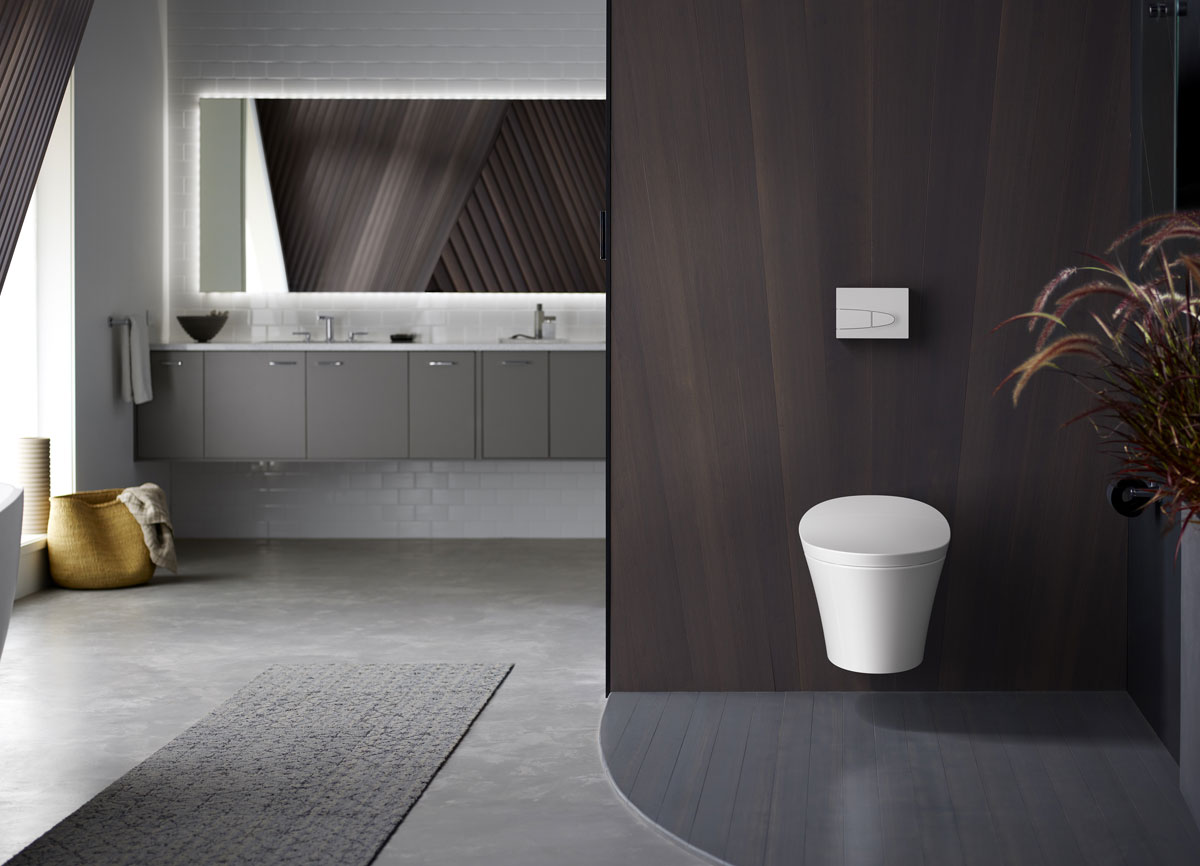
What are the origins Kohler?
Kohler is a now 4th generation family business which was started in 1873 by John Michael Kohler. Today it is a global business operating across various sectors and headed by David Kohler, President and CEO. Kohler Co. designs and manufactures kitchen and bath products under renowned global brands like KOHLER and KALLISTA; engines and power systems; luxury cabinetry and ANN SACKS tile; and is the owner/operator of two, five-star hospitality and golf resort destinations in Kohler, Wisconsin, and St. Andrews, Scotland.
How do you work with interior designers?
We work with designers through collaboration as a partner to help them achieve project requirements within the brief. We do so in the first instance by introducing them to our bathroom ranges designed for UK and global project specifications. This is supported and underpinned by our London Clerkenwell showroom, the Kohler Experience Centre, where we invite A&D to learn about our brand, experience our products and participate in talks and events that support the design community.
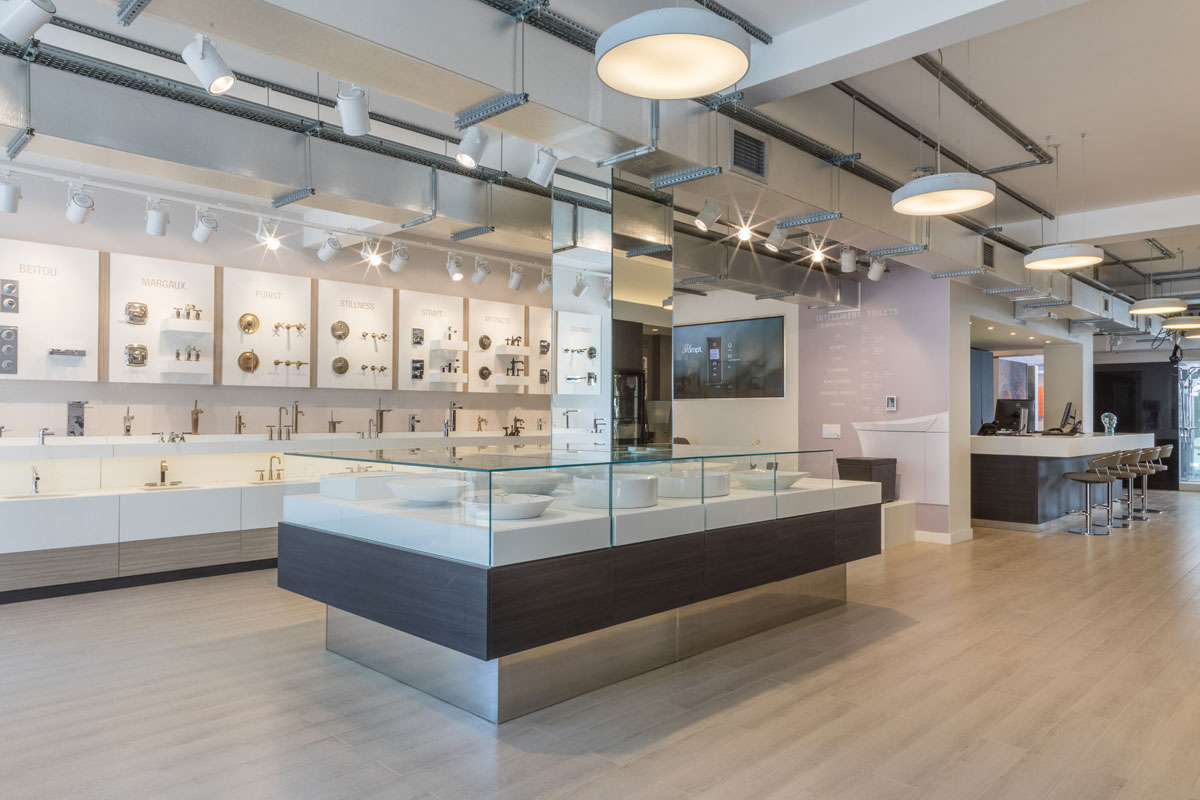
What value does your sector add to the interior design industry?
The bathroom today, as most designers will agree, has become an increasing focal point of specification with a far greater demand on design and function while delivering upon the dimensions of wellbeing we all strive to achieve in today’s modern world. It is now considered by many that the bathroom is the most integral part of the home to specify. More bathrooms are being added to projects and no longer the clinical white box but a need to ensure the space provides an environment that is tactile, stylish, modern, and offers a seamless transition from one room to the next. Above all, it’s creating a space of wellness as well as function. As such, the bathroom sector has adapted to offer products that reflect the different materials and colours often reserved for products seen in living spaces while bringing luxury, functionality and technology to new levels of possibility.
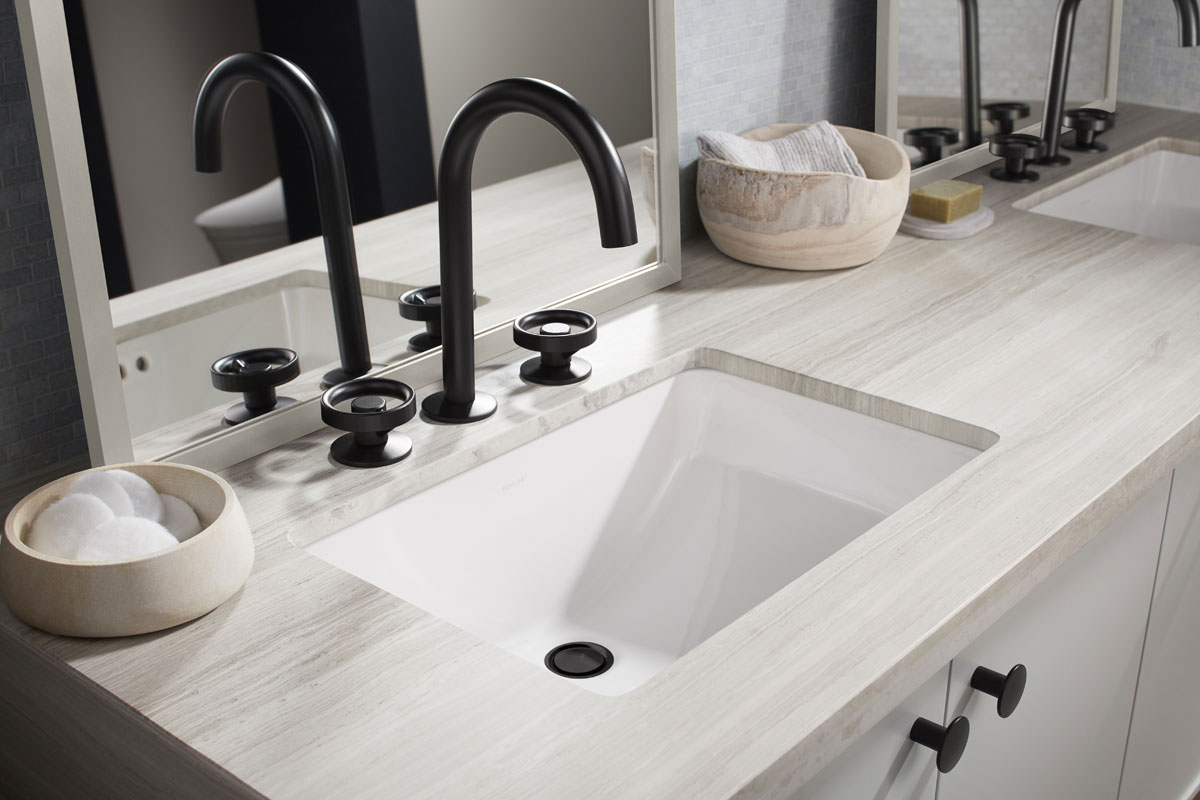
How do your services/offering enhance an interior designer’s projects?
As a manufacturing business, and in particular with respect to the bathroom specification sector, we manufacture products to simplify the specification process, so that wherever possible we can be a one-stop shop for bathroom specification for the designer. From basins, furniture, WCs, and taps, to shower enclosures, fittings and accessories we can help to make specifying a much more gracious experience.
What are the latest trends you’ve noticed in your client’s requests?
Metal colour finishes and the variety of choices available for tap and shower fittings have been hugely popular. We are seeing a resurgence in gold whilst the emergence of black and brass coloured finishes are now commonly requested across various levels of specifications, and not just at the very top end of specification. In light of the ongoing global situation with Covid, we are also seeing more demand for hygiene technology across specifications, whether it's intelligent toilets, touchless products or in the very material of the product itself.
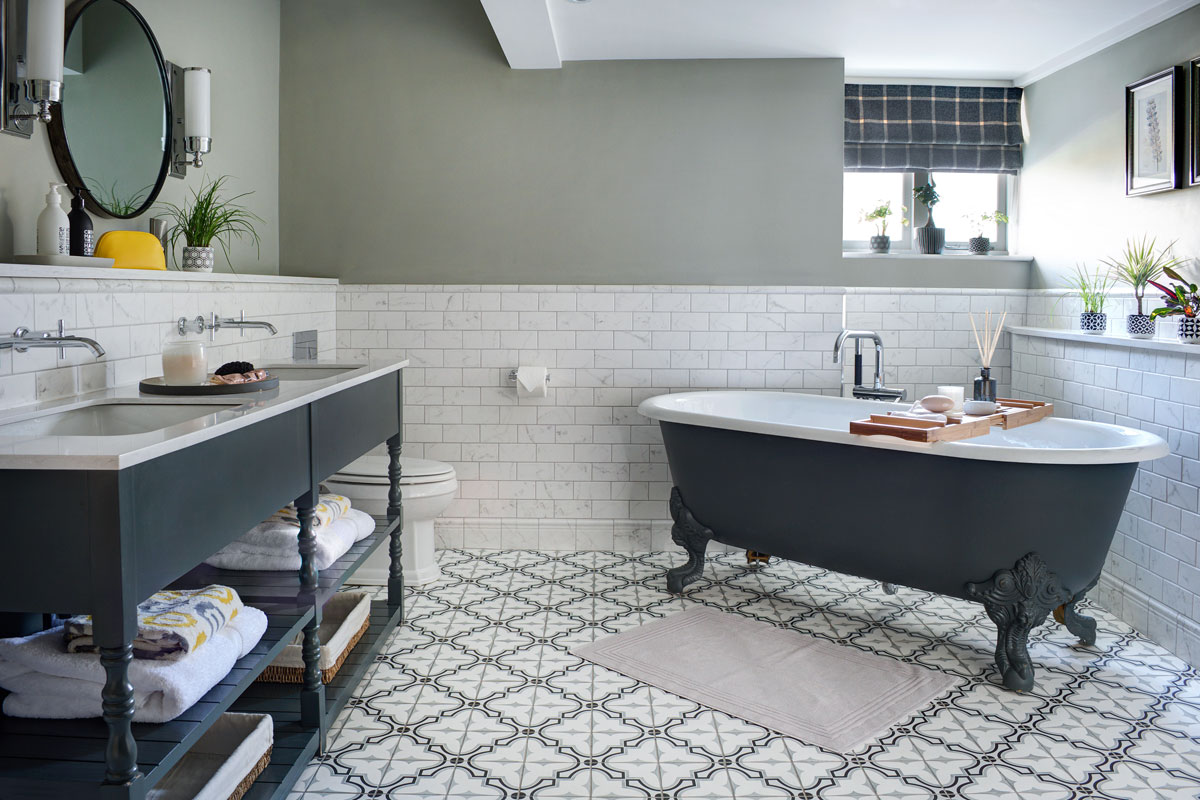
Why did you become a sponsor for the SBID Awards?
Kohler is a well-established brand within UK project specification, and we want to recognise the amazing work created by the UK design community which is driving global project design – many of whom we work with regularly on specification for various hospitality and residential projects. Kohler remains positioned as a global leader which continues to evolve and adapt to meet the needs and demands of both the specifier and consumer not just today, but also well into the future.
Sponsors of the KBB Design category for the SBID Awards 2021!
Entries are open until Wednesday 30 June.
To find out more about entering, visit www.sbidawards.com
To find out how to join SBID professional membership, click here
This week's instalment of the #SBIDinspire interior design series features a residential design by 2020 SBID Awards Finalist Chains Interiors. The Taiwan-based design practice worked on this high-end project which was inspired by a song written by the owner.
SBID Awards Category: Residential Apartment Over £1M Sponsored by Vectorworks
Practise: Chains Interiors
Project: Write A Song For You
Location: Taipei, Taiwan
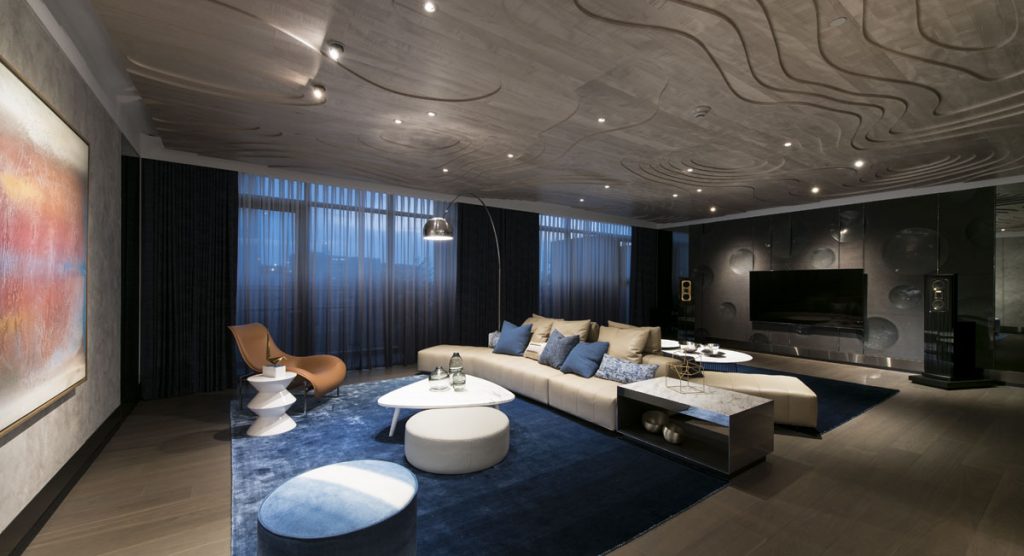
What was the client's brief?
Our client is a professional Musician. Since music is such a big part of his life, he wanted music to flow in all corners of the home, while remaining functional.
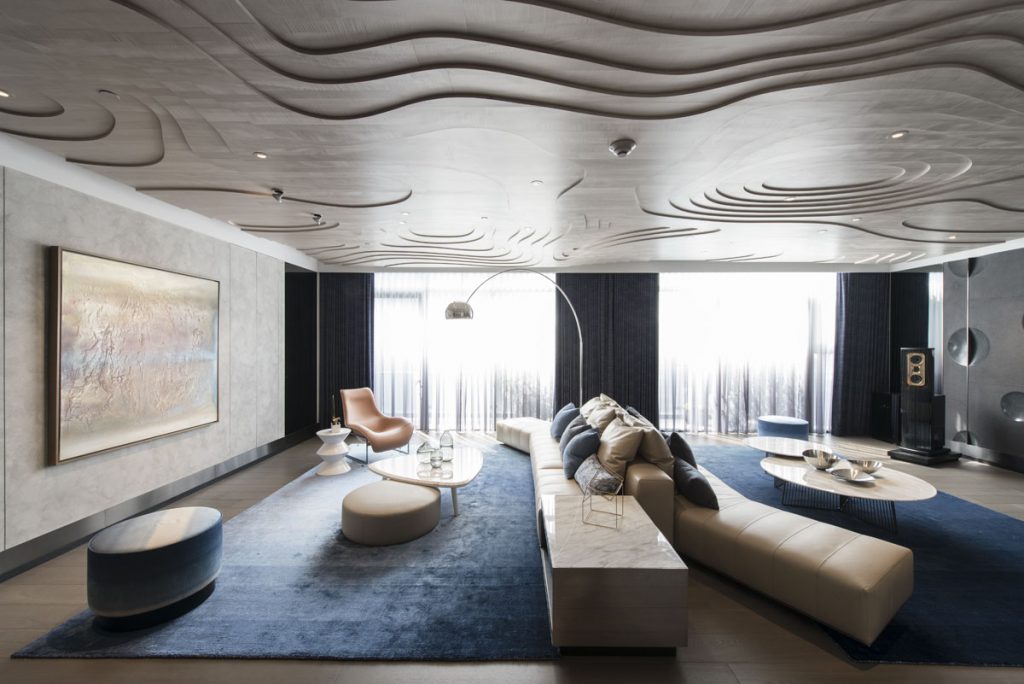
What inspired the design of the project?
The concept of this design is inspired by a song that a house owner wrote for his beloved wife. While the tunes and tempos of the song transform into lines on the walls, the spontaneous melodies also turn into colours in the space and the twists and turns of the notes into topographic curves on the ceiling. Together these elements become a manifestation of the tenderness conveyed by the song.
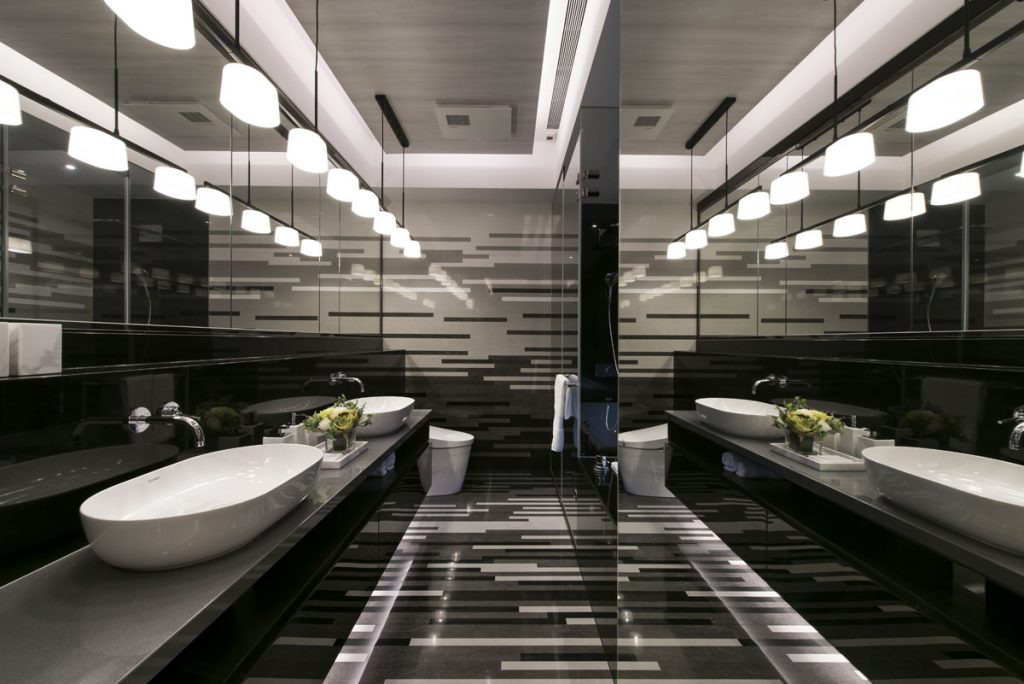
What was the toughest hurdle your team overcame during the project?
Finding a balance between aesthetics, design concepts, actual usage requirements and budget. We also wanted to make the intricate ceiling lines perfect, so we made several versions to make sure the final design achieved this.
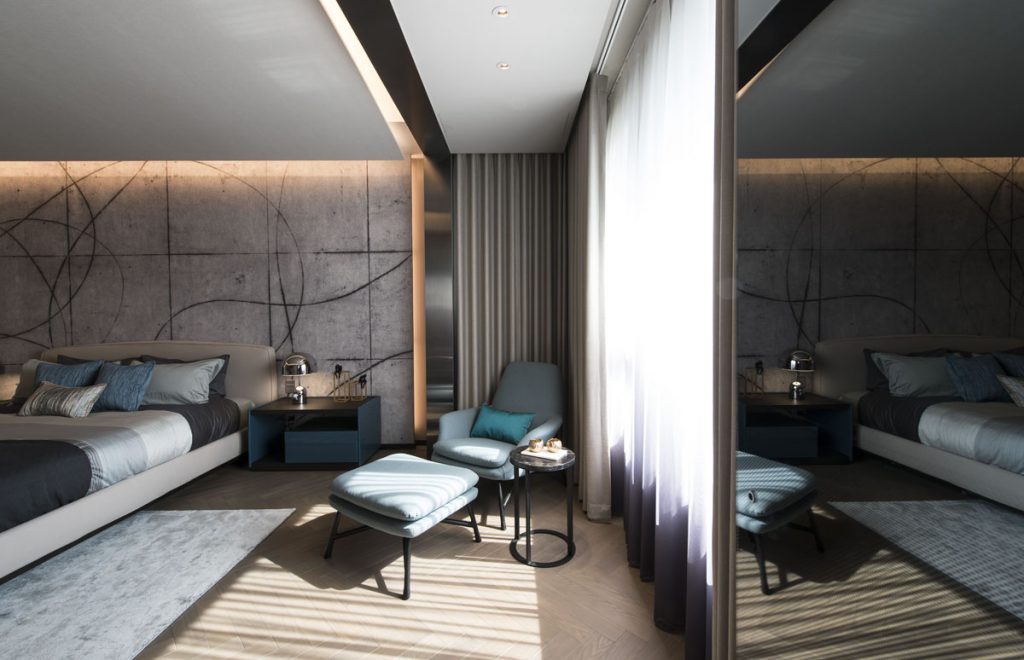
What was your team’s highlight of the project?
The highlight of this project was successfully fitting the final design with every part of the song that the house owner wrote.
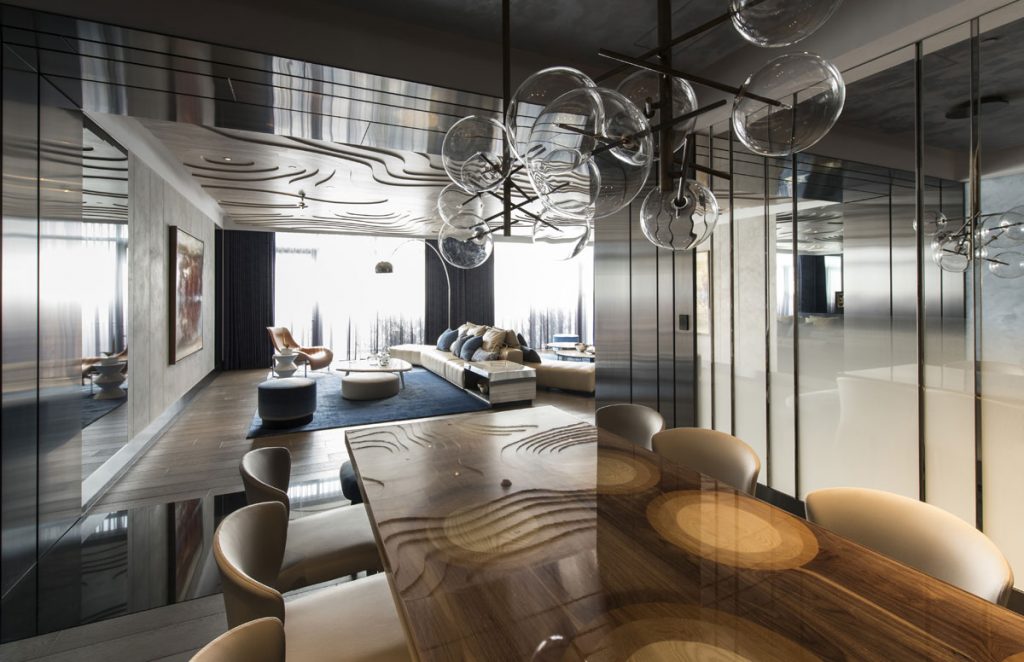
Why did you enter the SBID Awards?
The SBID Awards have always celebrated international certification and we wanted to showcase our work to a wider audience by participating in this competition.
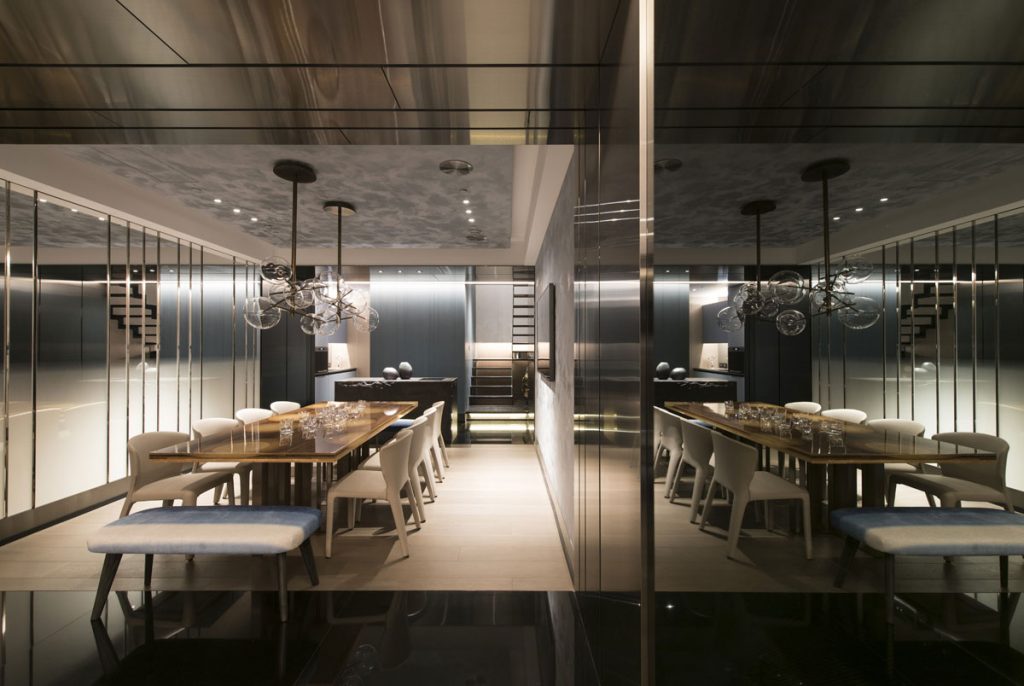
Hitzig Militello Architects share the inspiration and process behind their high-end Buenos Aires cocktail bar and restaurant project; Osten.
Osten, the high-end cocktail bar and restaurant, is located in Puerto Madero's distinguished neighbourhood in Buenos Aires. The generating idea and initial design concept stems from the era of the economic crash in 1929. Inspired by the novel The Crack-Up by Scott Fitzgerald, and the decadence of glamour from The Great Gatsby.
At first glance, a large corridor is built with scaffolding and the name Osten hangs on perforated metal located in the main entrance that also functions as a waiting room. This sets the scene and atmosphere in an alluring effect to inspire desire to discover the space step by step.
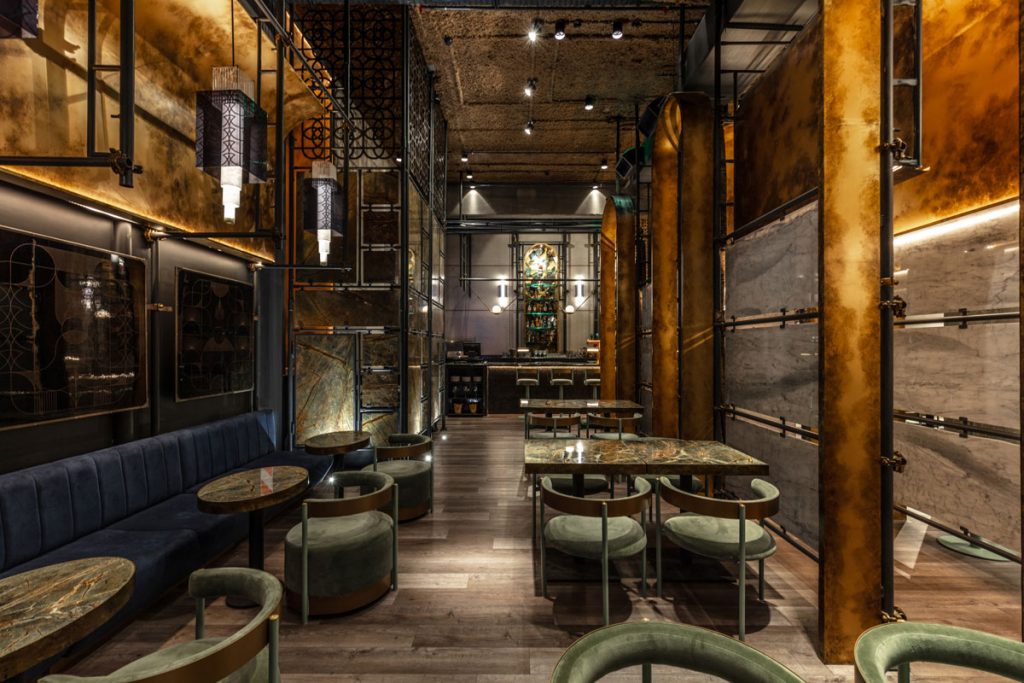
The corridor has 6 different accesses to the general space - this was fundamentally designed so each of the areas can be made independent to divide the areas as private spaces when required.
Access to the bar is at the end of the corridor, crowned by metal perforated structures to frame the identity and design of the bar. The corridors separate the entire space into two large areas of use against the backdrop of this large, statement bar.
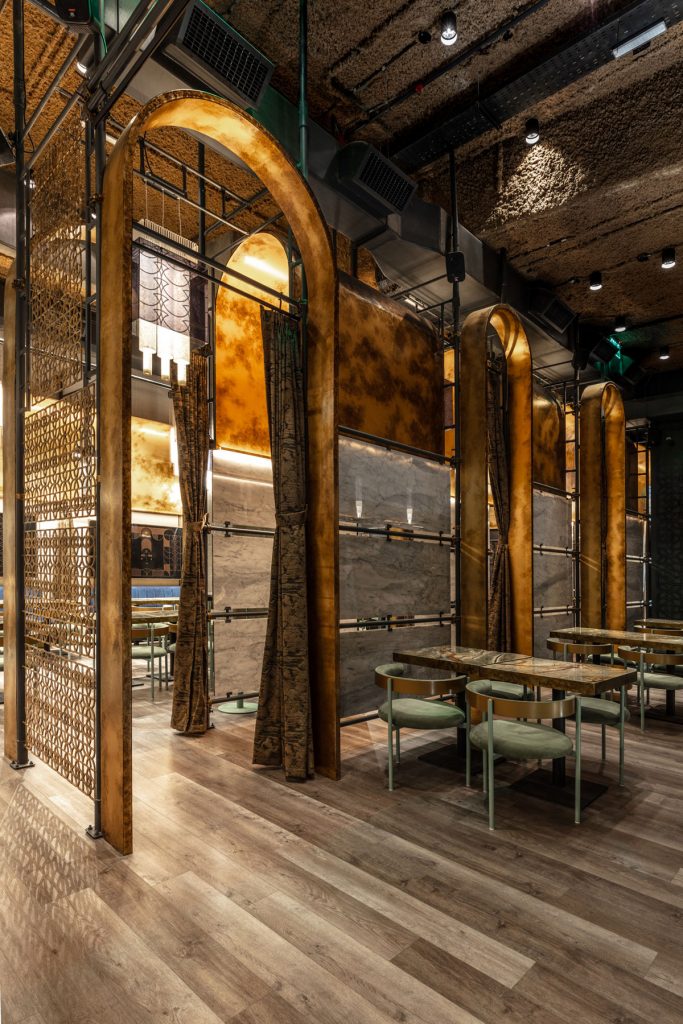
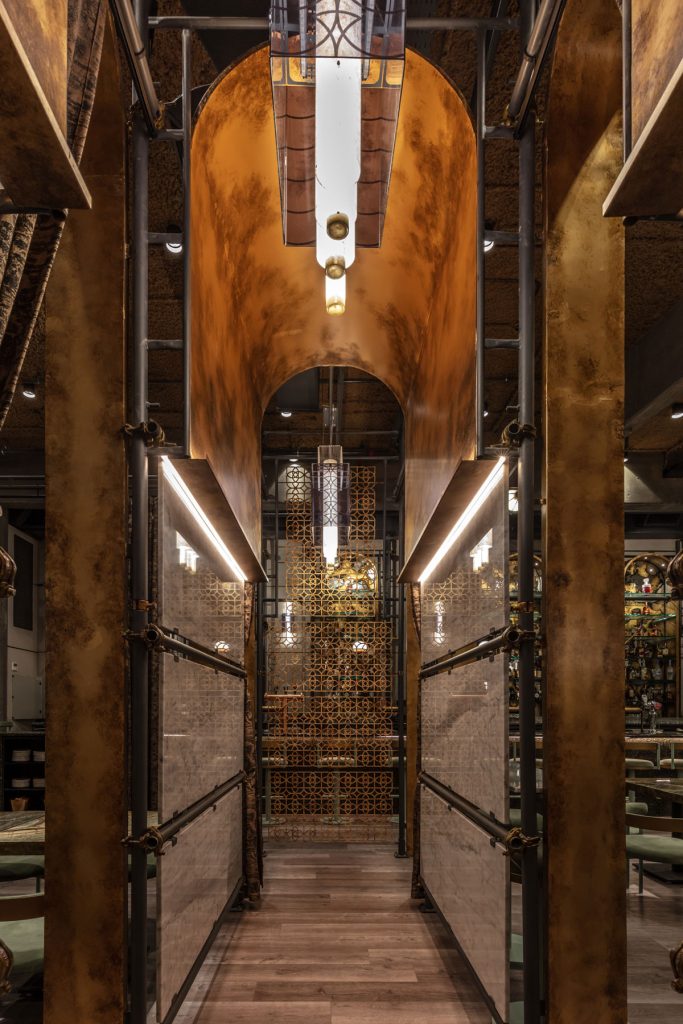
The presence of scaffolding acts to support the design theme, representing the era that could no longer support itself. The essential characteristic of scaffolding devices throughout the scheme is ultimately the temporality of their use, and it is this word "temporality" that defines the end of that era of over indulgent elegance. These scaffolds underpin large sheet metal arches painted in gold, but without the glitz or bombast, their appearance is instead rather aged.
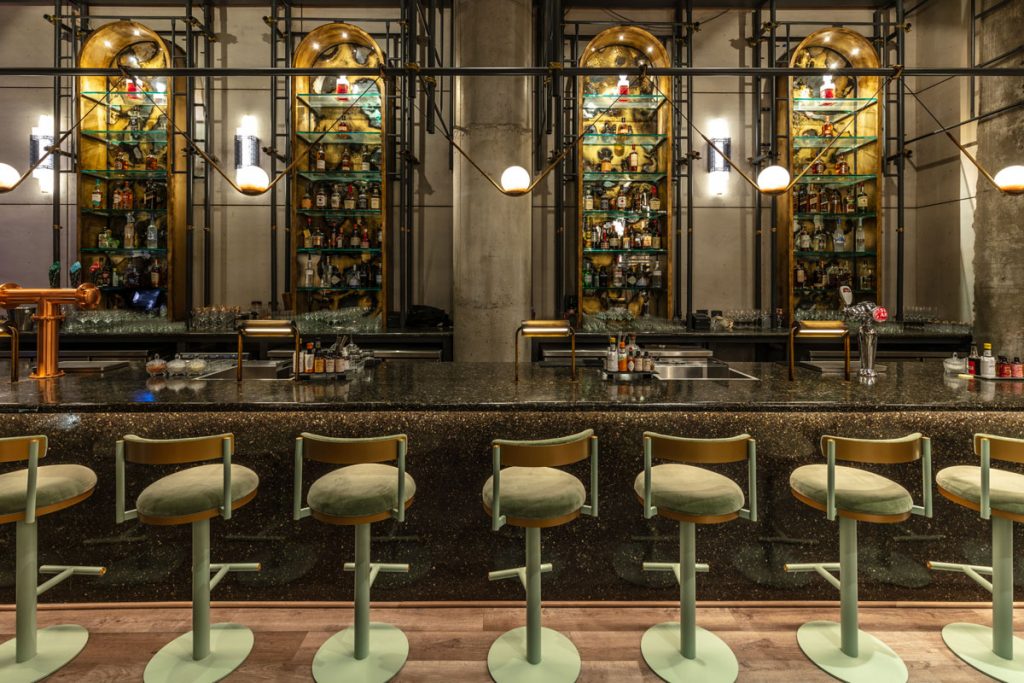
The language of the arches is carried throughout and used house all the most representative areas with the bar at the epicentre; the access through a large corridor, the bar itself and its setting, as well as the staircases and perimeter seating area. Knots hold each encounter of the aged scaffolding with old bronze paint.
Modernity is essentially represented by the inner skin, built with cementitious plates and marble organised in pieces in different areas. These marble slabs are arranged in between the scaffolding structures, seeking a relationship between the elegant and the temporary. All Carrara and dark green marble slabs are arranged linearly and held in an ethereal way.
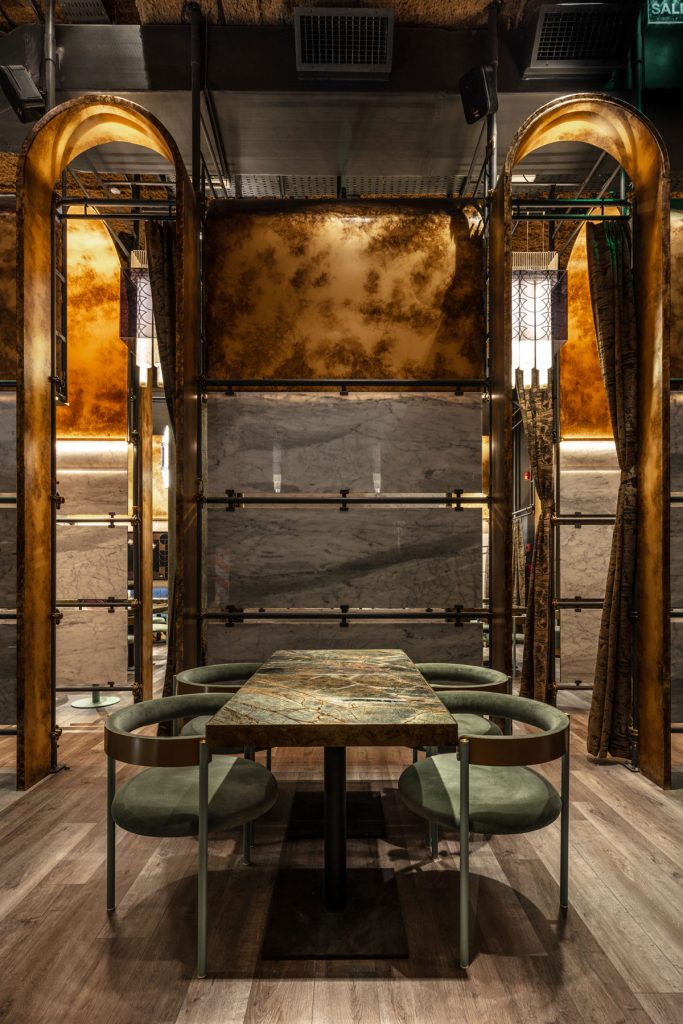
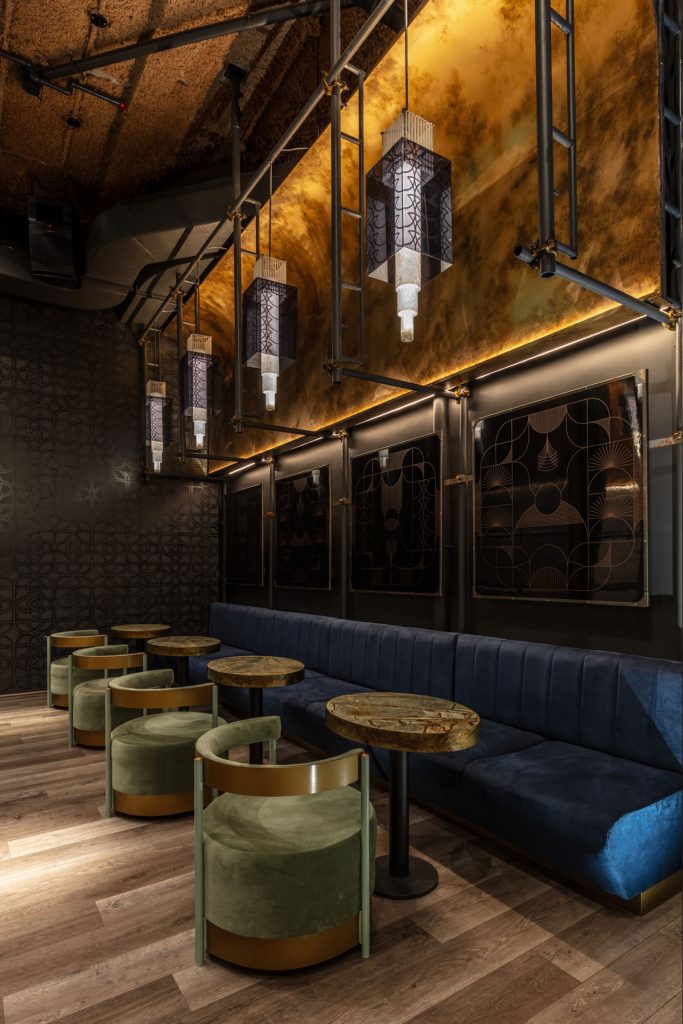
Modernity also makes an appearance through the acrylic tubes that are part of the lighting system where the two worlds are combined; the modern and its acrylic packaging with art deco drawings. In the same way, large lamps that simulate spiders, hang with acrylic tubes and chains representing the beads.
The graphic identity developed from the naming typography was applied in different spaces, in the form of a stencil on walls and through cut-outs in plates to achieve devices that function as dividers. As a result of typographic development, graphic pieces of feminine profiles have been developed and applied in the form of artistic paintings held by the scaffolding system.
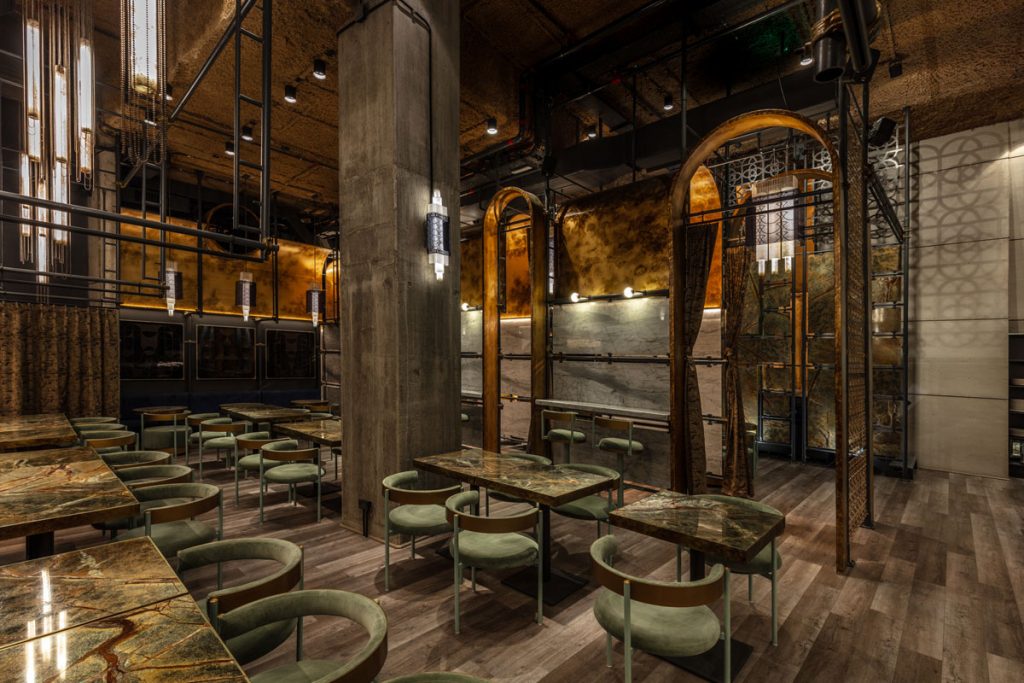
The scaffolding system extends to the outdoor spaces to support the seating area, with a large mural designed by the branding team through the development of the typeface family. The tonality of the old bronze, dark green, light and blue was the result of a sober and elegant composition.
As a professional accrediting body for the Interior Design industry, the Society of British and International Interior Design (SBID) have formed a partnership with FRAME - the recruitment specialists in Interior Design, Architecture and Visualisation to support professionals working in interior design with career opportunities, career advice and guidance.
The partnership was formed to provide an important link between SBID members and a trusted recruitment business, supporting interior designers with employment and recruitment opportunities.
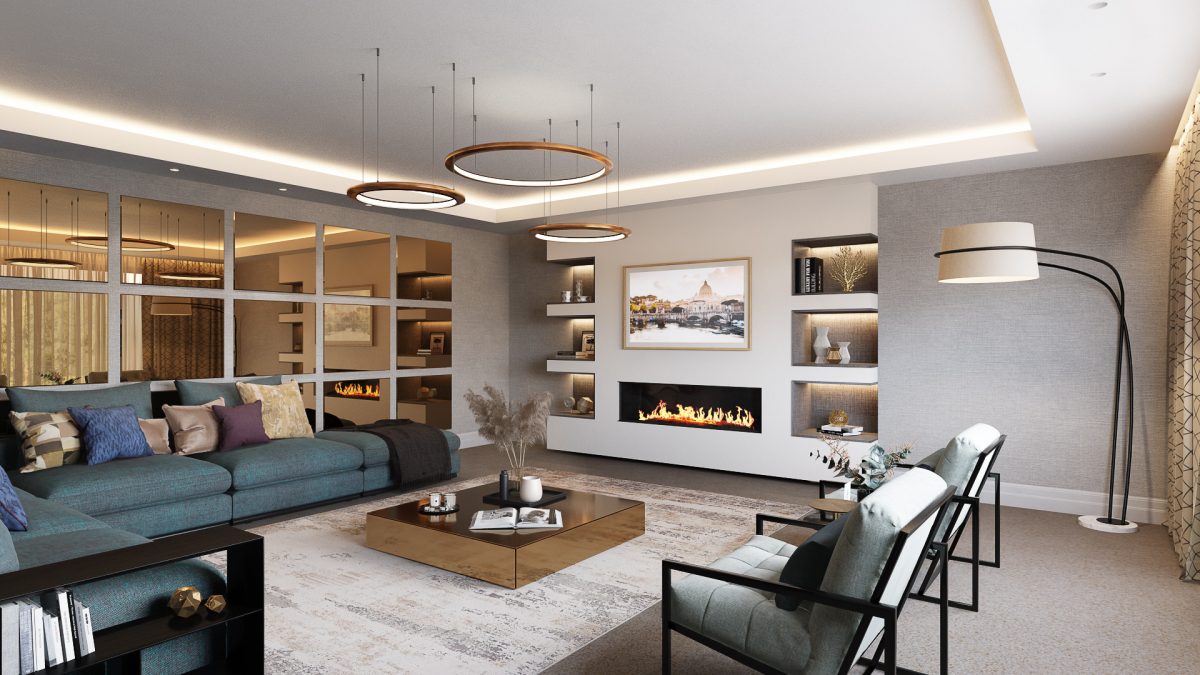
Dr Vanessa Brady OBE, founder & CEO of SBID says: “I’m delighted that we can now provide employment opportunities for SBID members through this partnership, whether to find their new team member or discover the latest interior design job vacancies. Finding new talent is time consuming and expensive, so it is important to recruit with care. It takes time to source an honourable partner and we are confident that FRAME Recruitment are the perfect match for the high standards we uphold, and our ever-evolving industry demands.”
“We are honoured to form a partnership with an internationally recognised professional accrediting body for the Interior Design industry at this important growth stage in FRAME’s journey. We are pleased to be able to provide an important link between the esteemed members of SBID and some of the UK’s top Interior Design practices. Offering key career and recruitment advice to committed professionals is what the FRAME specialist Interior Design team does best.” Explains Martin Bennell, Managing Director of FRAME Recruitment.
Join Vanessa and Martin at FRAME's Interior Design & Architecture Spring Update Webinar on Thursday 29th April 2021 at 12pm BST.
Please contact Jasmine Stirling Jasmine.Stirling@frame-recruitment.com to secure your place.